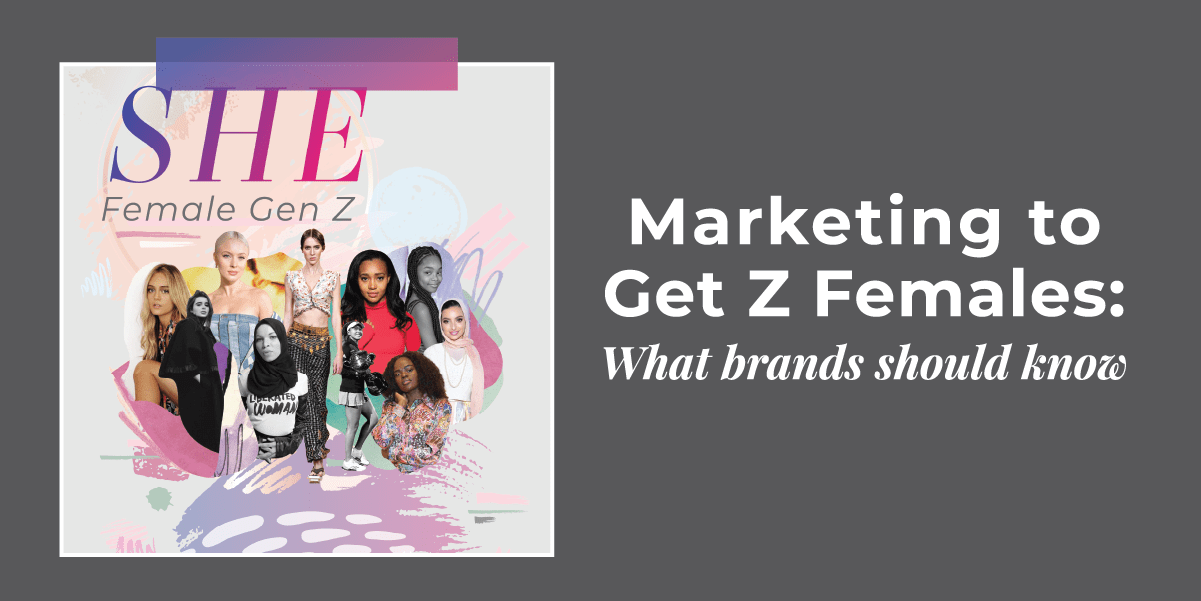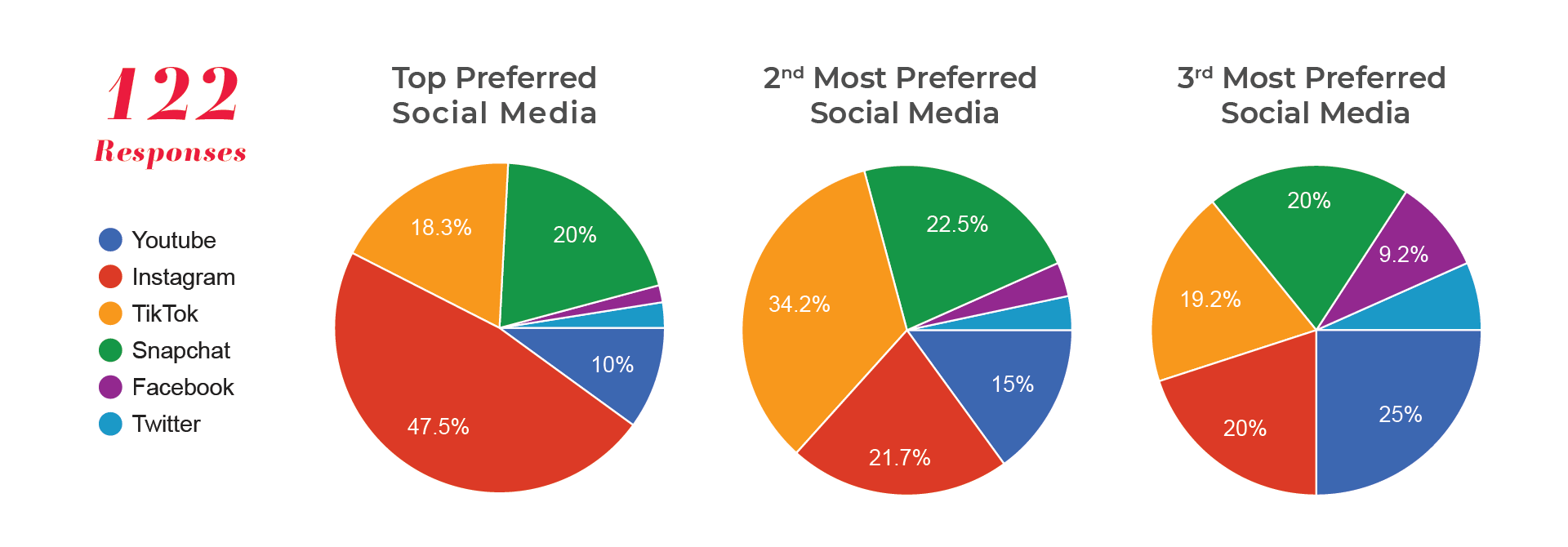Who is she?
Females born between 1997 and 2012 are being coined Generation Z. This analysis includes any woman ranging from 10 to 24 years in age.
While technology, world debates, and events continue to shape Gen Zers, let’s look briefly at the generation before to understand what sets them apart. Millennials were between 5 and 20 years old when the 9/11 terrorist attack took place. In contrast, Generation Z would have little to no memory of that tragedy. However, they did experience the aftermath. They watched as their parents faced an economic crisis and as their millennial relatives struggled to establish financial independence.
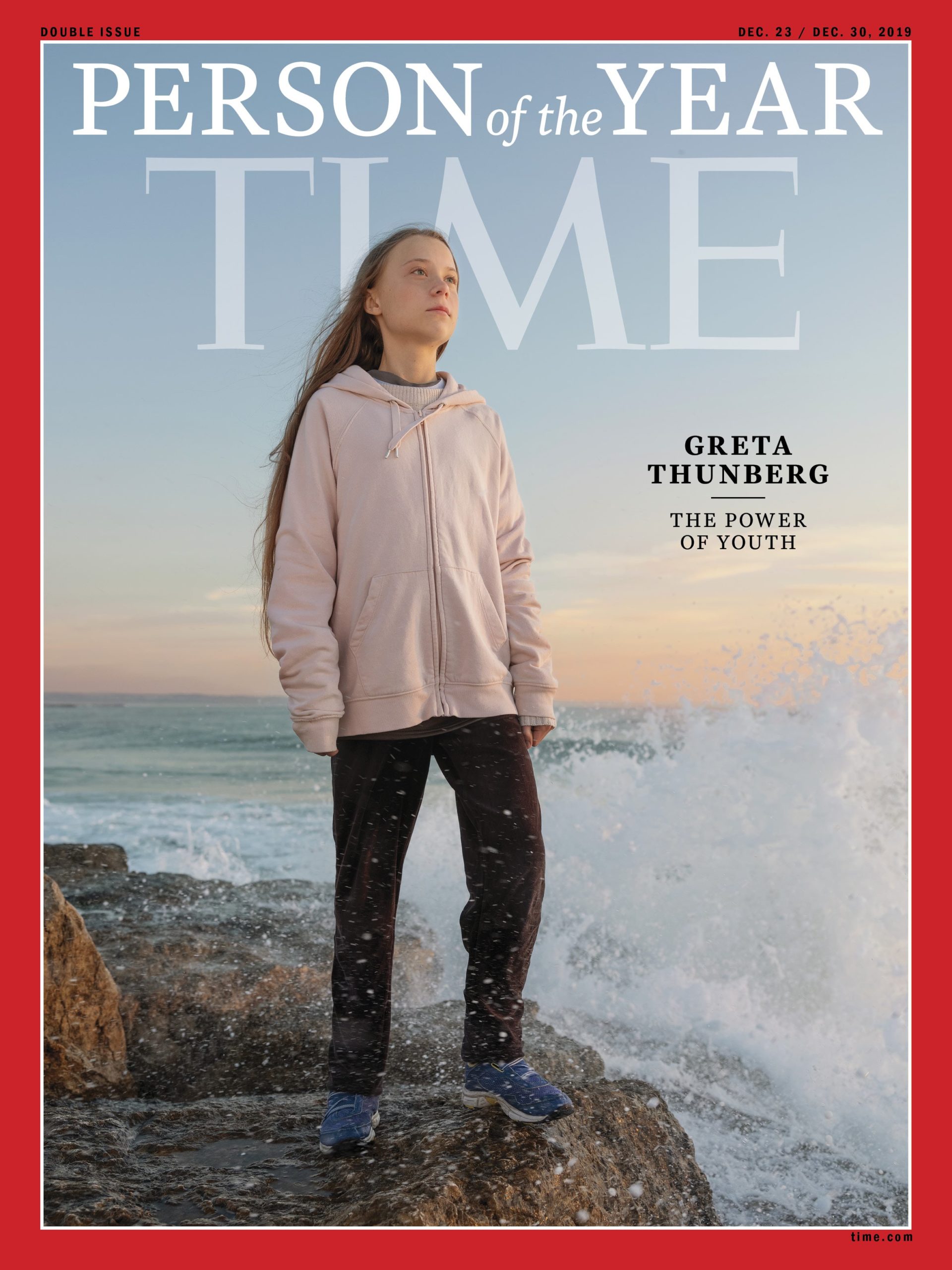
How did she reach thousands of people across the globe? Authenticity, science, and most importantly, technology.
Perhaps the most impactful global phenomenon that has shaped the newest generation is the launch of the iPhone in 2007.
The older Gen Zers would have been just 10 when it debuted. According to KidsHealth.org, the average girl will begin to develop physically and emotionally into a young woman starting at the age of 10. Gen Z women were seamlessly woven into the WiFi-driven environment at the same time that they were going through puberty. They essentially don’t remember a world without social media, constant notifications, and entertainment at their fingertips.
Gen Z women were stuck quarantining at home during the pandemic, resulting in record amounts of time spent on their phones. Thus, resulting in even shorter attention spans. Generation Z’s attention span is only allotted eight seconds, with millennials at 12 seconds. Therefore, every second counts.
When uninterested in what they’re seeing, this younger generation will simply scroll past. The quick scrolling feature is why Gen Z females prefer social media apps such as Instagram and TikTok.
Social Media Preference
In 2019, a survey conducted by Business Insider revealed that members of Gen Z gravitate toward Instagram, Snapchat, and YouTube. Pew Research confirms that analysis in a study from 2020, stating that 85% of Gen Zers say they use YouTube, 72% use Instagram, and 69% use Snapchat. Facebook is less popular with only 51% using the social media site.
A recent survey has yet to be conducted, let alone one that analyzes genders separately. Therefore, Open Influence conducted an online Google Form survey with only Gen Z female respondents and added TikTok to the social media options. The results show that TikTok is in fact a top platform chosen along with Instagram and YouTube. When ranking, TikTok is actually the second most popular social media app, right behind Instagram.
Takeaway #1 – TikTokers
Brands need to go against traditional marketing strategies to reach the generation that makes the most transactions. Pivot from standard TV ads and meet them where they are: on visual and interactive social platforms such as TikTok.
TikTok is the latest top contending social media platform for Gen Z females with 1.65 billion downloads and untapped marketing potential. With Gen Z making the most transactions annually, brands need to adjust to meet their most profitable customers where they are.
These days, people don’t talk about TV commercials nearly as often as they used to, especially the younger ones. No, now people are spending more time talking about the TikToks they’ve seen than even TV shows themselves. Ads on TikTok are far less expensive than other avenues of advertising, like TV ads. Ironically, TikTok was featured a lot in the 2021 Super Bowl. TikTok is not buying a TV ad, but several companies feature the platform and its stars in their own Super Bowl ads. This speaks volumes, as a 30-second commercial can cost up to $5.6 million.
TikTok’s advertising costs can range between $50,000 to $120,000, depending on the ad format and duration. Though ads can still be expensive for businesses, posting 15-60 second video on TikTok is 100% free, and the word-of-mouth advertising can be priceless.
Examples
An example of a brand using the free resource-side of TikTok would be InvisaWear. They did not spend any money on advertising when they targeted Gen Z females on the social media app. They simply posted about their everyday accessories like bracelets that double as safety devices. A button hidden on the backside will contact five emergency contacts, track you, and even call 9-1-1 if pressed. Even though their TikTok account has a meager 6 thousand followers, their brand is still well known. That is all thanks to one customer who made a video on the product, which garnered over seven million views and over two million likes. A few other customers’ videos also exceeded two million views. Even though their product is relatively expensive, they received so many purchases that they went out of stock for some time.
@callikoaReply to @_officialkoko_ heres the info on the bracelet! it’s called invisawear! ##fyp ##foryou ##staysafe ##invisawear♬ original sound – calli
A brand can take user-generated content (UGC) and repost it as branded content. This costs nothing but adds a lot. Nearly 80% of people say UGC has a high impact on their purchasing decisions. Additionally, brand engagement increases when user-generated visuals and professional content are both used for promotion.
Takeaway #2 – Influencers
Gen Z women are most likely out of all generations to follow influencers on Instagram. Team up with micro-influencers for the highest engagement rates and to fulfill possible conversion KPIs.
Gen Z females are not just following their dreams; their dreams are giving them a following. An audience is not the only thing that comes with producing content for social media. Perhaps more importantly, it also comes with the opportunity to generate an income.
Generation Z females are the most likely out of all generations to follow influencers on Instagram. They listen to influencer’s product recommendations and consider them reliable. #instagraminfluencer
Examples
As a result, the brand received more organic exposure from an influencer with millions of followers. Macro-influencers can expect engagement rates of around 5% on average. In contrast, micro-influencers can generate double that if not triple.
Sometimes it’s more strategic to partner with an influencer with less than 100 thousand followers like @zahraaa1 as they often produce higher levels of engagement, more clicks, and in turn a higher ROI.
View this post on Instagram
Do not confuse audience size with influence. Micro and mid-tier influencers are more community-minded. Therefore, brands could be better off employing influencers with smaller, more engaged followings if they are trying to target Gen Z females specifically.
Open Influence is not like the other influencer marketing companies. Here, we vet for cost, exclusivity with other brands, usage rights, and manually double-check past brand partnerships. We also receive actual impression data on influencers’ past 30 days of posts. Many influencers average 5-15% impressions-to-followers. But at our influencer marketing agency, we drop these low-performers from our recommendation, as we mandate a minimum 20% impression-to-followers average.
For more recommendations for targeting Gen Z through influencer strategies, check out our blog on Reaching Gen Z Through Influencer Marketing.
Takeaway #3 – Socially Aware
Purchasing behaviors influenced by personal values and activism is a new concept. Gen Z women don’t just want brands to take a social stand, but they expect it.
When shopping, Gen Z women look for brands that have a social impact. In a study published by Girl Up, a UN Foundation organization, 65% of Gen Z women surveyed said that they expect brands to take a stand on social issues. The social values of Gen Z women directly impact their purchasing decisions and brand loyalty. During the Black Lives Matter Movement, many brands were tweeting their support. Sephora, a popular makeup retailer, took it one step further and decided to pledge 15% of their shelf space to Black-owned companies.
We’re joining @15percentpledge and @aurorajames. We recognize how important it is to represent Black businesses and communities, and we must do better. So, we’re starting now. https://t.co/rmaiUmX2hW pic.twitter.com/3EdsJShRXh
— Sephora (@Sephora) June 10, 2020
“I think purchasing as activism is a new concept. I think many generations certainly like supporting a company that does good, but Gen Z see this as very much inherent to who they are as activists,” says Melisa Kilby, co-director of Girl Up.
Gen Z consumers are not only supporting brands that will give back to the community but according to the survey, 72% think it’s vital to also purchase from environmentally-friendly brands.
Examples
Patagonia is an excellent example of this. They design clothing and gear made from recyclable and reusable materials, and they find ways to minimize impacts throughout their supply chain.
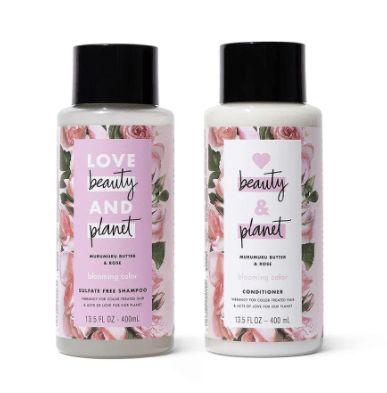
Takeaway #4 – Authentic
Gen Z females are looking for brands that are authentic and that convey trust.
Authenticity is essential across all generations, but specifically to Generation Z females. They have a built-in bullcrap detector. This equally applies to individuals and brands. There is no need to try to seem perfect with this group. In fact, showing that you’re human will only help in building brand loyalty. Gen Z females love to be emotionally invested in both the people behind the brand and its success story. By being authentic, brands can generate genuine trust.
Examples

This video was the most viewed viral ad campaign of the year, with one video getting almost 70 million views on YouTube. It inspired commentary among various news outlets, including the New York Times, ABC News, and The Huffington Post. Dove successfully used authenticity to help women develop a more positive relationship with their appearance while simultaneously building brand loyalty. It’s important to note that while the ad was widely championed, they received criticism for only featuring white women in the commercial. Be mindful of diversity. Gen Z females will notice.
Takeaway #5 – Inclusive Individualists
Gen Z women will pay more for individualized products. However, do not separate products by gender. They are inclusive individualists. If a product can’t be personalized, a brand can utilize social media to make consumers feel like they played a part in the products themselves.
Generation Z females are not the type to want to fit in with the norms of a group. Instead, they want to stand out and authentically express themselves. Companies can capitalize on this by ensuring their products and messaging help Gen Z females achieve this goal. Gen Z females are even willing to spend more on products that highlight their individuality. However, leave gender out of the conversation if possible. In a study conducted by McKinsey & Company, almost 50% of Gen Zers said they value brands that don’t classify items as male or female. Ironically, they are inclusive individualists.
Examples
Instead of gender individualization, think about asking consumers to fill out a quiz that will customize the product. An excellent example of this is Curology. They provide a skin quiz on their website that takes 5 minutes to complete and will give consumers a personalized skincare formula.
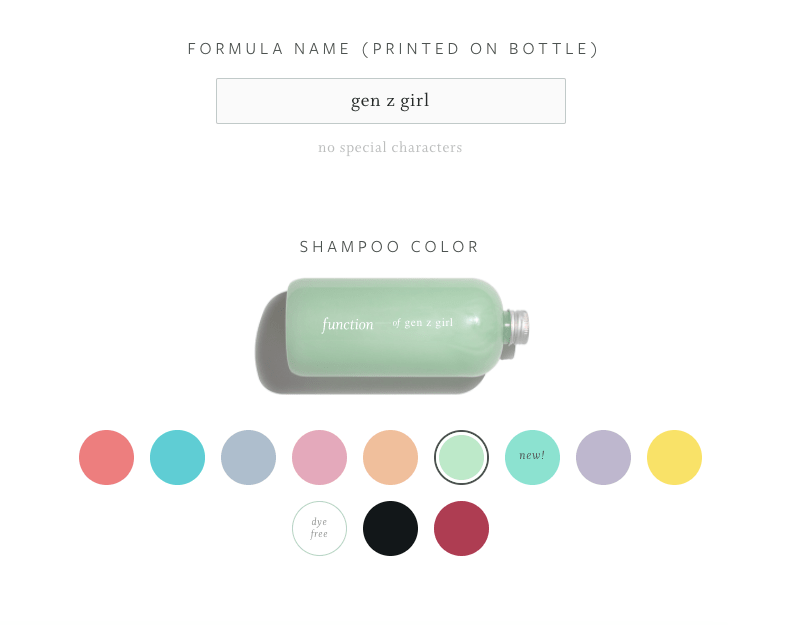
For brands whose products can not be personalized on an individual basis, Ouai uses Instagram polls to ask consumers questions about what fragrance, sizes, and bottle shapes they want in upcoming product launches. It is not only possible but vital to a brand’s success that they create two-way conversations so that the consumers, in turn, feel heard.
To better understand Generation Z’s interests, core values, and expectations with brands, listen to the newest episode on the #DecodingInfluence podcast.
Open Influence is a global influencer agency that helps facilitate meaningful partnerships between brands and content creators. If you’d like to learn more, please contact us at any of our social media channels or drop us an email at social@openinfluence.com. We’d love to hear from you!

